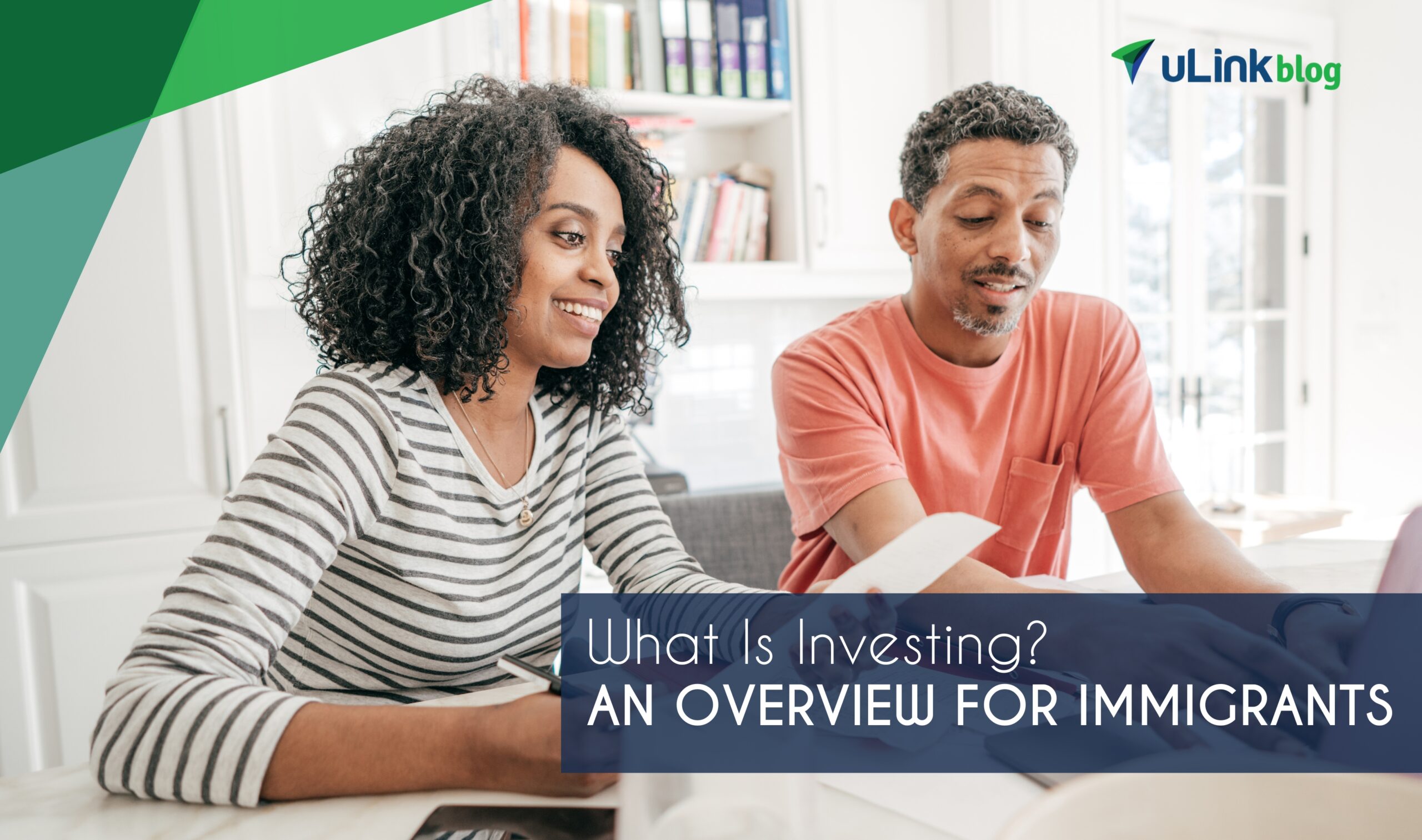
Investing is more intuitive than it might seem.
While most schools don’t teach it, it’s relatively easy to learn. And contrary to public opinion, you don’t need to be an expert to get started.
All you need is a little curiosity, a bit of available cash, and about an hour of free time. However, it’s important to always be very mindful when investing.
To help you begin, in this overview we’ll cover the fundamentals of investing 101, introduce the primary types of investments, and offer a few tips to get started in the stock market.
Let’s begin.
Investing 101: A Primer
Let’s get right to it: what is investing
In simple terms, investing involves purchasing an item with the hope that it will generate a profit.
In the financial world, these items are called assets, and they come in four primary forms:
- Stocks.
- Bonds.
- Exchange-traded funds/mutual funds.
- Commodities.
We’ll explore these categories in the next section, but for now, let’s take a quick look at the standard process of investing.
For example, let’s say you purchased a $5 share in ABC Company.
After three months in the market, your initial $5 investment grows to $10, doubling your money.
This growth in value is called appreciation. When you buy an asset at a given price and sell it at a higher price, you earn what’s known as a capital gain.
Of course, your $5 investment could also go the other direction. Sometimes, the market value of a stock will decline—though its price cannot go negative (i.e., drop below zero).
So, while your $5 investment could potentially become $10 (or more), it could also drop to $0 if ABC Company encountered difficulties or suffered bankruptcy.
Such volatility is inherent in the marketplace.
Therefore, because the value of assets is constantly shifting, it’s best to view investing as a long-term game.
According to legendary investor Warren Buffett:
“We haven’t the faintest idea what the stock market is going to do when it opens on
Monday—we never have. I don’t think we’ve ever made a decision where either one of
us has either said or been thinking: ‘we should buy or sell based on what the market is
going to do.’ Or, for that matter, what the economy is going to do.”
In other words, patience is paramount, and nobody knows the future—not even Warren Buffett.
Though some savvy investors try to time the market (i.e., buy and sell based on advanced market predictions), the average investor is better off prioritizing their time in the market.
The latter approach minimizes risk, which is the possibility of experiencing financial losses in the market. To diminish risk, investors are encouraged to pursue what’s known as diversification: investing across multiple asset classes.
With diversification, investors avoid concentrating all of their money in a single company or sector. For example, rather than putting all of their available funds in ABC Company, they also put a percentage of it in XYZ Company, 123 Company, and a popular ETF.
Diversification helps insulate your portfolio from volatility and reduces your risk tolerance—the amount of money you’re willing to lose.
This brings us to the inevitable question: why invest when saving money may appear safer?
While it’s true that high-yield savings accounts can generate 5% APY, the stock market typically offers stronger returns. For example, the S&P 500—an index of the 500 largest companies in America—has averaged returns of over 10% since 1957.
While investing involves a degree of risk (and you should always keep this in mind), it has also demonstrated considerable resilience over the last few decades.
Main Types of Investments
There are many kinds of personal investments you can make.
For example, you might redo your flooring, update your kitchen, or build a new porch to increase your home’s value.
You might purchase a term life insurance policy or even invest in real estate to diversify your portfolio. In some cases, you might even consider an advanced degree or certification an investment in your career and marketability.
Today, however, we’ll focus on securities—the tradable, financial instruments that hold monetary value. In this sense, the main types of investments include:
1. Stocks
When you purchase a stock, you buy a share in the ownership of a publicly-traded company. As a result, you directly participate in that company’s gains and losses.
Some stocks also pay dividends, where corporations regularly provide a portion of their profits to eligible shareholders.
In the U.S., most stocks are listed in two major exchanges: the Nasdaq and the New York Stock Exchange (NYSE), where major corporations like Amazon and Apple are publicly-traded.
Resource: Want to learn more? Check out uLink’s complete guide to investing in stocks.
2. Bonds
When you purchase a bond, you loan money to a borrower for a fixed period of time.
In most cases, bonds are offered by corporations or governments seeking to raise capital.
Bonds are commonly referred to as a form of fixed income investments, as the bond issuer promises to pay investors a fixed rate of return until the bond reaches maturity.
When the bond matures, the owner will have held the bond for the contractual length of time, which can be 5 years, 10 years, or longer, depending on the agreement. At the bond maturity date, the borrower will return the lender’s principal investment.
Many bonds are considered “safe” investments, as they might offer a greater guarantee than stocks—though their earning potential is considerably lower (yielding around 3 to 4%).
Important: Though bonds are generally less risky than stocks, they are not risk-free. After all, issuing companies and governments could potentially default and absorb your initial investment.
3. ETFs and Mutual Funds
Exchange-traded funds (ETFs) and mutual funds offer exposure to a wide collection of assets.
Rather than purchasing individual stocks, investors can leverage ETFs and mutual funds to bundle multiple securities.
As this approach helps diversify portfolios, it also reduces risk and exposure.
Most mutual funds are actively run by professional money managers and generally require a minimum investment of $500 or more. Active funds typically aim for higher returns but incur higher costs and risks along the way.
Conversely, most ETFs are passively overseen by investment companies and have more affordable entrance requirements. Therefore, ETFs are regarded as an ideal investment vehicle for beginners, as they offer the convenient benefits of a “set-it-and-forget-it” strategy.
In other words, after you invest in a passive ETF, you don’t need to worry about constantly adjusting your portfolio (as active money managers will do).
For example, a popular passive ETF like SPDR S&P 500 (SPY) is built to mirror the performance of the S&P 500 index.
As of March 2024, its top holdings include Microsoft, Apple, Amazon, Google, and Berkshire Hathaway, among many others.
While each ETF and mutual fund has its own structure, the SPDR S&P 500 provides a good example of sector allocation: 29.84% information technology, 13% financials, 12.58% health care, 2.36% real estate, among others.
Note: Stocks aren’t the only ETFs on the market. You can also invest in popular bond ETFs to help save time (and reduce exposure).
4. Commodities
While stocks enable you to invest in companies, commodities empower you to invest in physical products.
There are four categories of commodities to consider:
- Agriculture such as cotton, wheat, corn, coffee, and soybeans.
- Energy such as crude oil, natural gas, and petroleum products.
- Metals such as gold, silver, and copper.
- Livestock such as cattle, milk, beef, and pork bellies.
While it’s possible to own and transport these materials, that approach remains impractical for most consumers. After all, unless you’re a farmer, it probably doesn’t make sense to have cows roaming around your front lawn.
That’s why modern investors utilize futures contracts, which are agreements to buy or sell a predetermined amount of a commodity at a future date (and at a specific price).
Futures contracts are a gamble, as they bet on an asset’s anticipated demand (or lack thereof).
Therefore, buying and selling futures requires considerable expertise, significant cash reserves, and a thorough understanding of the global economic landscape.
For example, some players in the commodities market will bet on oil during times of war, while others increase their gold reserves as bullion trades near all-time highs.
Note: Interested in pursuing commodities while reducing your downside? Check out these leading commodity ETFs to help limit your exposure.
Getting Started as an Investor
Investing is surprisingly easy.
As we discuss in our guide to stocks, you can open a free online brokerage account and begin investing in ten minutes or less.
The challenging part is deciding when to begin investing (though sooner is better than later), and where.
As you begin your journey, keep the following considerations in mind:
1. Find Your “Why”
Investing is a deeply personal process.
Therefore, it’s important to ask why you’re investing before you decide where to allocate your resources.
Maybe you’re preparing for retirement.
Maybe you’re planning to buy a new house.
Maybe you’re saving for your child’s college education.
Or, maybe you’re simply looking for better ways to hedge against inflation.
There are no wrong answers, but once you know what you’re investing for, you can begin to strategize with confidence.
2. Determine Your Risk Tolerance
Investments are volatile.
Thanks to the law of supply and demand, stock prices fluctuate throughout the day.
Before you enter the market, you must determine the amount of loss you’re prepared to accept at any given time.
This criterion is known as risk tolerance—your appetite for risk—and it will help reveal the kinds of investments best suited to your financial situation.
For example, while a low-risk investor might build a portfolio with annuities and corporate bonds, a high-risk investor might favor cryptocurrencies, real estate, and individual stocks.
Generally speaking, investors with a higher net worth can afford to assume greater risks than individuals maintaining a tight budget.
To determine your unique risk tolerance level, start by estimating how many years you have until retirement.
The longer your time-horizon, the higher your risk tolerance may be. Conversely, older investors are often advised to consider lower-risk options, like fixed income instead of stock funds.
The nature of your goals—and the time-horizon needed to achieve them — will help determine the assets you choose.
As always, adequate diversification helps reduce the overall volatility of an investment portfolio.
Note: If you’re investing for retirement, be sure to check out our complete guide on opening an Individual Retirement Account (IRA).
3. Start Sooner Than Later
Investing can seem monolithic, like an activity that only billionaires pursue.
In reality, however, over 61% of Americans own stock—a majority that’s growing every year.
To enter the market, investors must be willing to delay their gratification in favor of long-term success. That’s why it’s important to start investing as early as possible in your career.
If you’re between jobs or struggling to make ends meet, it’s okay to put your investing journey on hold. The stock market isn’t going anywhere.
However, there are three strong signs that show that you might be ready to begin investing. If you:
- Consistently end each month with a bit of extra money.
- Have already established a reliable emergency fund.
- Have your sights set on one or more clear financial goals.
As we’ve discussed, time in the market is a profitable mentality. After all, the power of compound interest is simply too great to ignore.
For example, if you put $100 a month in a shoebox for 30 years, you’d have $36,000 in savings.
Not bad, right?
However, if you invested that same amount of money in assets that yielded a 7% annual return, your investment would exceed $113,000 over the same length of time.
Ultimately, you don’t need to be rich or famous to start investing. You just need a bit of extra cash and ongoing patience to let your assets grow in value.
Resource: Curious how compound interest can energize your financial future? Check out this free compound interest calculator, courtesy of the U.S. Securities and Exchange Commission.
uLink: Investing in Your Loved Ones
What is investing?
It’s the process of fortifying your financial freedom, one day at a time.
There are many types of investments to consider, and we encourage you to investigate each one of them. As always, don’t hesitate to contact a financial advisor if you encounter any difficulties along the way.
We hope this introductory article has answered some of your most pressing questions about investing 101, and we will continue to bring you financial insights in the coming months.
While investing is a journey, you can support your loved ones in a matter of minutes.
With the uLink Money Transfer app, you can easily send money home with great exchange rates and fees as low as $0.
So even when you’re miles from home, you’re only moments away with uLink.









